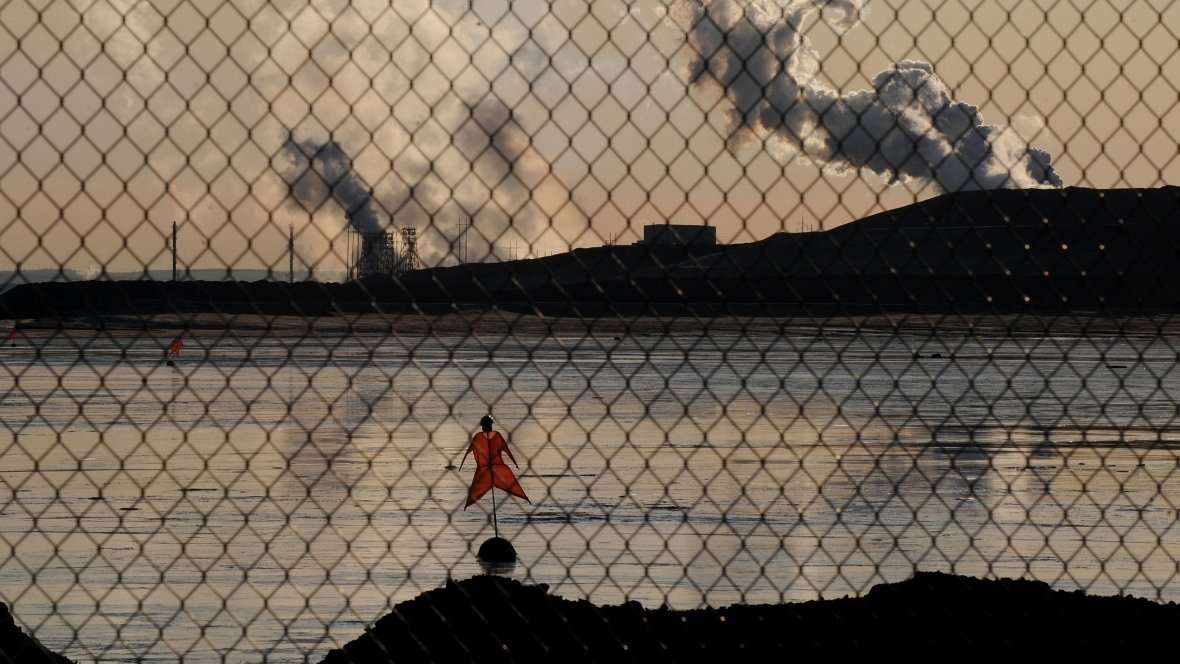Scientists discover oil sands pollution significantly under-reported
In Canada, when it comes to figuring out how much pollution the oil sands emit, the government relies on industry to report their own numbers. That's how policies get made and regulations are formed, but it turns out the oil sands companies have been significantly underestimating the level of a certain type of pollution they emit.
Back in 2013, researchers gathered their own data by flying above and around four different oil sands facilities at different altitudes. Dr. Shao-Meng Li, a senior research scientist for Environment and Climate Change Canada and lead author of the study, says he found the oil sands producers were emitting two to four-and-a-half times more volatile organic compounds than they had reported. Those are gaseous organic compounds that can be toxic for human and environmental health.
Aerial view of the Syncrude oil sands extraction facility with the Suncor extraction facility in the background, near Fort McMurray on October 23, 2009. (Mark Ralston/AFP/Getty Images)
Dr. Kelly Munkittrick, the director of monitoring for COSIA, an alliance of oil sands producers working together on research and development around environmental performance. He says the industry's aware of this issue of uncertainty in their reported volatile organic compounds levels. "This is really one piece in a complicated puzzle. Industry's got a bunch of other studies looking at other pieces. And at some point it's all got to be brought together to try and turn into - what is the best approach to try and get more consistent monitoring of this kind of information."

masmedian on May 4th, 2017 at 05:44 UTC »
As a former oil field worker, I do not find this surprising in the slightest. I worked as a labourer on one of the major tank farm sites (a storage and transportation area from Ft. Mac to Hardisty and onto U.S. refineries) just south of Ft. Mac from 2011-2012. I can tell you that pipelines burst all the time and it goes unreported.
When it happened during my time, the usual contracted security company had been replaced by a guy from the energy company who owned the rights to site. His job was to ensure the burst/leak remained quiet. He would check vehicles for camera equipment and electronic devices were not allowed on site during the clean up/cover up. We were also asked (told) not to talk to the media (or we would lose our jobs) as our morning safety meetings would have veiled and subtle threats as a part of them. Earning as much as we did with LoA and 14 hour shifts with 10-21 on and 4-7 days on off schedules, everyone was earning too much and had to much to lose to be whistleblowers.
Edit: LOA = live out allowance, it is basically a stipend that it's untaxed. Ours was a whopping cdn $ 210/day.
Subiebrat on May 4th, 2017 at 05:36 UTC »
Alberta has an air monitoring program in the oilsands if anyone cares to have a look.
https://www.ec.gc.ca/scitech/default.asp?lang=En&n=D0AF1423-1
GlobalClimateChange on May 4th, 2017 at 01:19 UTC »
Research Paper: Differences between measured and reported volatile organic compound emissions from oil sands facilities in Alberta, Canada